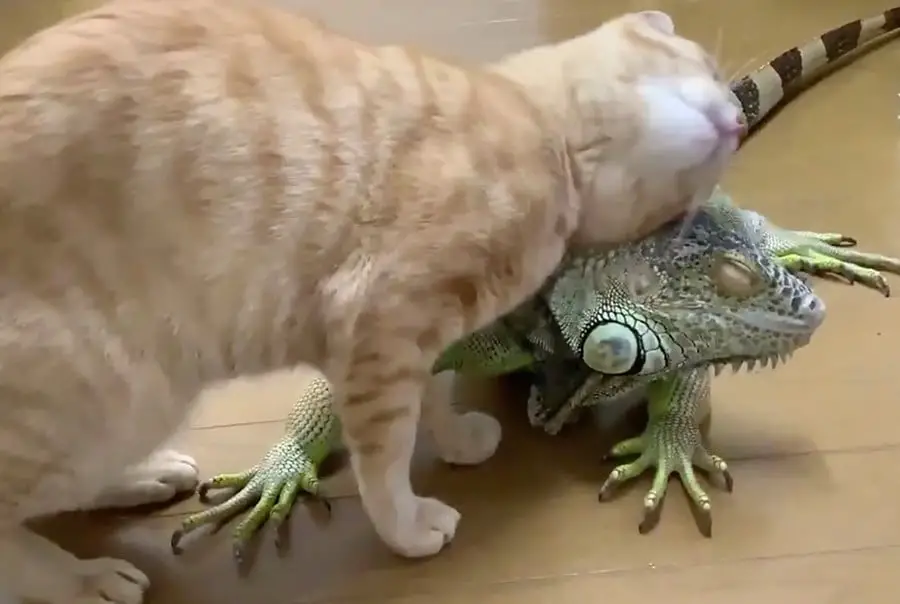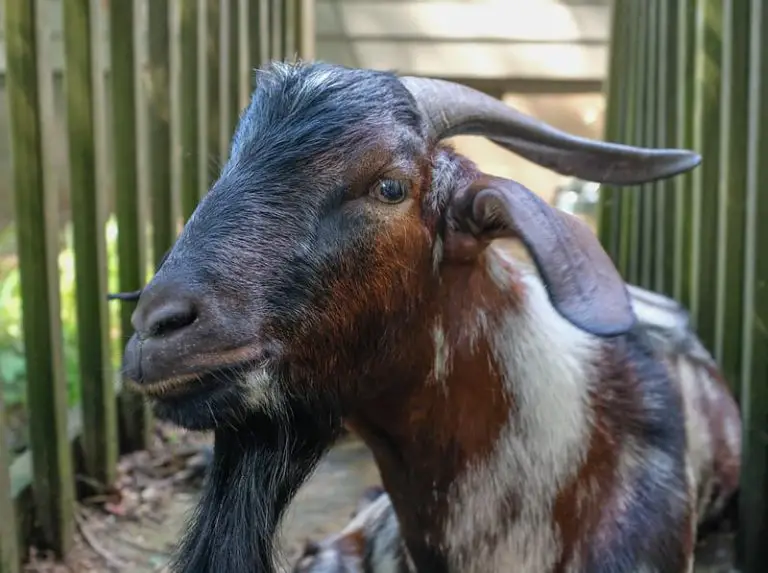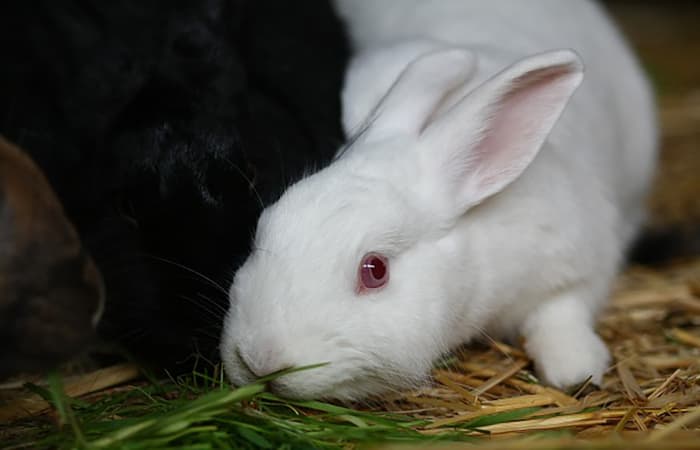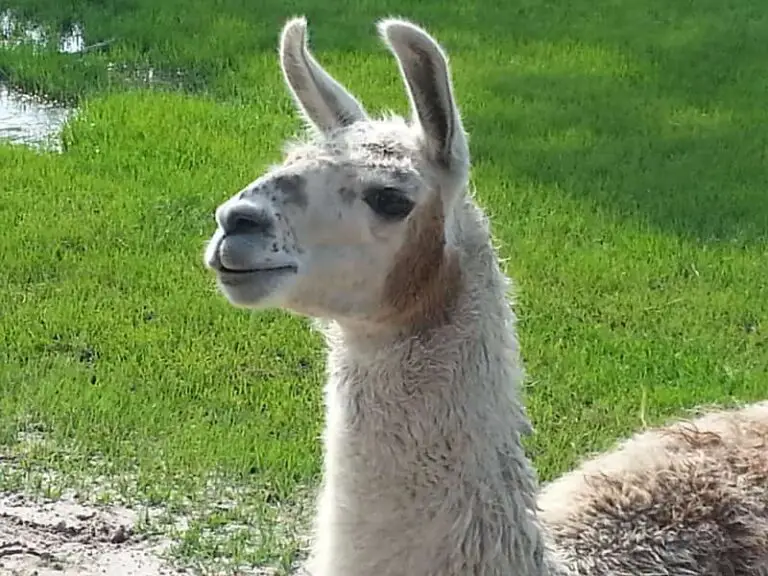Do Cats Attack Iguanas? (Depending On This)

The cats and the iguanas nowadays in spite of being animals totally opposite in characteristics maintain something in common, both can be pets. While cats, even if they are domestic animals, are known for their curiosity and their ability, stealth, and speed to hunt and eat other small animals, especially mice, lizards, and birds.
The iguana is known for its peaceful behavior and apparent vulnerability, although the green iguana is also considered a pest, many people around the world keep it as a pet.
But this difference and incompatibility between both animals could bring serious problems like the possibility that the cat could eat the iguana, and this is a possibility that objectively treated is 100% real.
There is a very high probability that a domestic cat can attack and eat an iguana, especially if the iguana is very small, but there is also a high possibility that the cat will only play with it or ignore it completely, although this is not a definitive answer to the question whether a cat can eat an iguana, it all comes down to probabilities and this is due to the following behavior of the cat:
- If the cat recognizes the iguana as a food it will try to eat it.
- If the cat recognizes the iguana as a toy, it will try to play with it.
- If the cat does not identify the iguana as food or toy, it will ignore it completely even if it is hungry.
Does the cat recognize the Iguana as food?
As mentioned previously, there is a high probability that the cat will recognize the iguana as its dish of the day, cats as good hunters are driven by their instinct and can make a quick analysis of their possible prey according to certain characteristics.
Among the characteristics that a cat can take into account to determine or classify an animal as its prey are; size, appearance, smell, and others, the cat will determine if this prey does not represent a real threat to it because the cat is perceived as both hunter and prey.
The smell would be one of the fundamental characteristics for the cat to determine if an iguana could be its food, the cat smells its obeys and passes this smell towards an organ that it has located in its palate r, connected with its olfactory system, called the vomeronasal organ.
This organ serves to identify the pheromones. The cat sucks in the air through its mouth and directs it to the vomeronasal organ where it identifies the pheromones from which it gets a lot of important information for its survival and social life.
So, if you see your cat with his mouth open breathing and staring at the iguana, he is really feeling the smell of the iguana on his palate. This reaction of the cat is called the Flehmen reflex.
A very small iguana is much more likely to fall victim to a cat because it is more vulnerable and has a strong, attractive cat smell.
Also, another very obvious fact to take into consideration, according to my experience and that of many other people, cats have more tendency to hunt than cats, it is likely to be less problematic if you have a cat and an iguana, than a cat and an iguana together in your house.
Does the cat recognize the Iguana as a toy or playmate?
Whether the cat recognizes its potential prey as a toy will depend on its breeding and feeding habits. A cat that has been domesticated since birth and has never lacked food is much more likely to treat potential prey as a toy than a wild cat.
Although really in the cat, always the instinct of hunting and its wild side is present, although it does not project it of the correct form at the moment of the truth.
But a cat that has not learned the art of hunting, even if it is capable of hooking a mouse, for example, may not eat it and only use it to play, especially if it has all its food needs covered in a home.
Chances of a cat hunting a small or large iguana
A cat can definitely hunt and eat a small iguana, but the larger an iguana is, the less likely a cat is to kill it.
The fact that a cat can hunt a small Iguana is due to its hunting method, usually, the cat hunts small birds and mammals that it can attack and put down with one of its paws, while putting it down with a bite.
Then the cat releases the prey and subdues it again in the same way, until it gets tired, for this method to work it must be small animals that are easily subdued by the cat.
But a big Iguana is much more difficult prey, impossible for a cat, its skin is scaly and rough, it can defend itself with tails and bites and is a really intimidating reptile just by looking at it.
Can an iguana bite?
The teeth of an iguana are shaped to rip up vegetable tissue, yet can cause very painful bites to both pets and humans. Their jaws are very strong enough to apply significant pressure.
Thankfully, these iguanas give you a warning before biting. So if you are aware of the dangers of biting, you may be able to save people and pets from potential injuries.
Large iguana species can bite the flesh so strongly that they may cause serious injury. The intention to bite can be recognized by the fact that the jaw is half or completely open. In addition, the animal is definitely in combat mode and tries to fight back.
The objective of the bite is not merely to defend itself, but also to cause great pain.In this way, the animal wants to ensure that the other person or animal stops the attack and avoids further attacks in the future.
The latter is repeatedly underestimated by the bitten owners. The germs in the iguana’s mouth can cause long-lasting and difficult-to-treat inflammations.
Are Iguanas Poisonous or Can They Hurt a Cat?
Recently it has been discovered that iguanas, along with other species popularly taken as pets, are poisonous. However, their venom is not produced in sufficient quantity to harm humans.
But what if a cat eats an iguana, could this poison cause it any harm? The green iguana does not secrete a potent poisonous toxin to harm a cat as a toad might.
The Iguana’s basic defense mechanisms to defend itself from predators are tails, bites, scratches, but an iguana would only hurt a cat or stun it if it was big enough, an Iguana could grow to over 5 feet, a very small iguana would not have the strength to hurt a cat.
If the iguana is large enough it can cause significant damage to a cat with a tail or a bite, iguanas perform this tail slap very quickly and have enough strength in their tail.
Another defense mechanism widely used by Iguanas as a last resort to escape from predators is to shed their tail and leave it as a lure while they make a quick escape.
Some lizards shake their tails in the presence of predators, or they have tails that are brightly colored to attract the attention of predators.
The movement of the tail and the striking colorations are seen as an adjustment that decreases the probability that the attacks of the predator will be directed at the head or trunk and diverts them to less vulnerable areas of the lizard, such as the tail.
However, if you have both pets, you shouldn’t let cats walk around with iguanas in the house. This doesn’t do any of the animals any real benefit. If only one of the two feels threatened, serious fights can occur. Therefore, the iguana should only be at home in the terrarium. This is also better for its heat balance.
The iguana as a plague and its potential danger
In some countries of the Caribbean and North America, for example in Puerto Rico and Florida, the iguanas are considered pests and in fact, their meat is consumable because it is lean meat even very similar to chicken meat, but it is not advisable its consumption due to the transmission of infections of diseases like salmonellosis.
If a cat eats an iguana infected with salmonella it can contract the disease.
Salmonellas are very present in domestic and wild animals. They are prevalent in edible animals such as poultry, pigs, and cattle, and also in pets such as cats, dogs, birds, and reptiles such as turtles.







